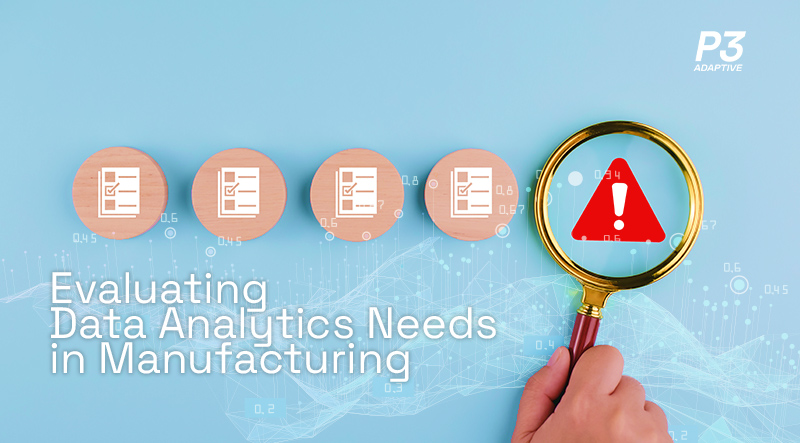
Data is everywhere in manufacturing—pouring in from machinery, ERP systems, and even the supply chain. But how do you know if you’re truly making the most of it? If you’re looking to boost efficiency, reduce costs, and improve decision-making, you first need to evaluate your data analytics needs. Here’s a straightforward checklist to guide you through the process, so you can cut through the noise and focus on what will actually move the needle for your operations.
Take stock of your current data processes.
Before jumping into new solutions, it’s crucial to understand how your data flows today. Are you using manual processes to track production? Is data stored in multiple, disconnected systems? Now’s the time to map out how your data is collected, stored, and used across your organization. This clarity will help you pinpoint inefficiencies and uncover where improvements are needed.
If you’re dealing with disconnected data sources, identifying them now will help set the stage for better integration down the road.
Check out examples of supply chain analysis.
Pinpoint your key data sources.
In manufacturing, not all data is created equal. To avoid drowning in irrelevant information, zero in on the key data sources that matter to your business—whether that’s production metrics, supply chain insights, or quality control data. The goal is to focus your analytics efforts on what will drive meaningful improvements, not just more noise.
Assess data quality and integration.
Your data can only help you if it’s accurate and accessible. Bad data leads to bad decisions, plain and simple. Make sure you have the right checks in place to ensure data quality. Inconsistent or incomplete data will only slow you down.
Integration is equally critical. If your systems aren’t talking to each other, you’re missing out on insights that could optimize your operations. Bringing all your data sources together in one place is key to unlocking its full potential.
Define your business goals and KPIs.
What are you trying to accomplish with data analytics? Whether it’s reducing downtime, improving production efficiency, or cutting costs, defining clear business goals is crucial. Once you know what you’re aiming for, you can determine the KPIs that will measure success. This alignment keeps your data strategy focused on driving outcomes, not just generating reports.
Check your technology stack compatibility.
The tools you use are just as important as the data you collect. Power BI, Azure, and Fabric can unlock powerful insights, but only if your current tech stack is compatible. Take the time to evaluate whether your infrastructure supports these advanced analytics platforms. This step ensures a smoother transition and maximizes the value of your investment.
Blog continues below:
Know your budget and ROI expectations
Data analytics is an investment, but it’s one that can pay off big. It’s essential to set a clear budget and ROI expectations from the start. Don’t just think about the cost of the technology—factor in the time and resources it will take to implement and maintain your data systems. When done right, data analytics can deliver measurable results that far outweigh the upfront investment.
Ready to make your data work harder for you?
Data analytics is no longer just a “nice-to-have” for manufacturers—it’s essential. Following this checklist will help you evaluate your current processes, understand your data sources, and implement a strategy that’s aligned with your business goals. At P3 Adaptive, we’re here to help you cut through the complexity and deliver a tailored solution that works for you. Contact us today to get started.
Get in touch with a P3 team member